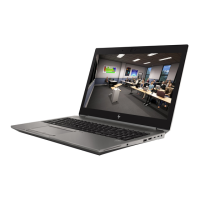Creating recovery media with HP Recovery Disc Creator
HP Recovery Disc Creator is a software program that offers an alternative way to create recovery
media. After you successfully set up the computer, you can create recovery media using HP Recovery
Disc Creator. This recovery media allows you to reinstall your original operating system as well as
select drivers and applications if the hard drive becomes corrupted. HP Recovery Disc Creator can
create two kinds of recovery DVDs:
●
Windows 7 operating system DVD—Installs the operating system without additional drivers
or applications.
●
Driver Recovery DVD—Installs specific drivers and applications only, in the same way that the HP
Software Setup utility installs drivers and applications.
Creating recovery media
NOTE: The Windows 7 operating system DVD can be created only once. Thereafter, the option to
create that media will not be available after you create a Windows DVD.
To create the Windows DVD:
1. Select Start > All Programs > Productivity and Tools > HP Recovery Disc Creator.
2. Select Windows disk.
3. From the drop-down menu, select the drive for burning the recovery media.
4. Click the Create button to start the burning process.
After the Windows 7 operating system DVD has been created, create the Driver Recovery DVD:
1. Select Start > All Programs > Productivity and Tools > HP Recovery Disc Creator.
2. Select Driver disk.
3. From the drop-down menu, select the drive for burning the recovery media.
4. Click the Create button to start the burning process.
Backing up your information
You should create system repair media and your initial backup immediately after initial system setup.
As you add new software and data files, you should continue to back up your system on a regular
basis to maintain a reasonably current backup. You should also create Windows system repair media
(select models only) which can be used to start up (boot) the computer and repair the operating system
in case of system instability or failure. Your initial and subsequent backups allow you to restore your
data and settings if a failure occurs.
You can back up your information to an optional external hard drive, a network drive, or discs.
Note the following when backing up:
●
Store personal files in the Documents library, and back it up regularly.
●
Back up templates that are stored in their associated directories.
136 Chapter 9 Backup and recovery

